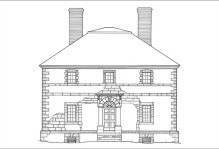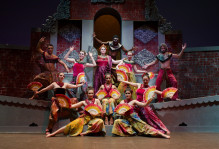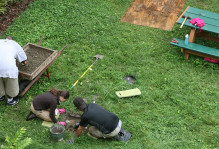The real story on Thomas Jefferson
It must be book season. In today’s mail, I received a copy of Susan Kern’s new book, The Jeffersons at Shadwell. I’ve already written a piece about this book, which literally rewrites our understanding of the young Thomas Jefferson.
Shadwell was the plantation birthplace of Thomas Jefferson and his home until it burned to the ground in 1770. Susan led a five-year excavation of the site. She began the dig looking for something not too far removed from a log cabin, but instead found evidence of a substantial plantation house filled with luxury goods.
Susan stressed in our conversation that the book is about all the Jeffersons—mother, father, their eight children and the sixty or so slaves that lived at Shadwell. It’s hard to remove your focus from the third president, though.
Jefferson is one of the most popular figures in American history, but there’s an absence of folk tales about his youth. Washington has the cherry tree story. Lincoln split rails. Franklin walked around Philly with three pennies worth of bread, no doubt ruminating on the invention of the cheesesteak. We grew up with those stories, but there isn’t one about Jefferson.
Susan told me that there is plenty of myth surrounding William & Mary’s most distinguished alumnus, even if the popular conception of Jefferson is bereft of a folksy peg. Some of the myth-building was politically driven, and came centuries after Jefferson died.
“Did Americans at the end of the 19th Century want their founders to be regular folks like themselves, or did they want them to be aristocrats, with high thoughts and privileged backgrounds that could rival European culture?,” she asks. A political cult of Jefferson hammered into shape a young T.J. with rough-and-ready roots, a diamond in the rough only slightly polished by his mother, a true member of the Virginia gentry.
Susan also told me that Jefferson wasn’t above a bit of myth weaving himself. He let on that his father’s death left him alone and adrift in a cruel world at the age of 14. Read the book (or at least my article) to get the lowdown on this one. For now, let’s just say that Thomas Jefferson didn’t come to William & Mary with a big work-study commitment.




No comments.
Comments are currently closed. Comments are closed on all posts older than one year, and for those in our archive.